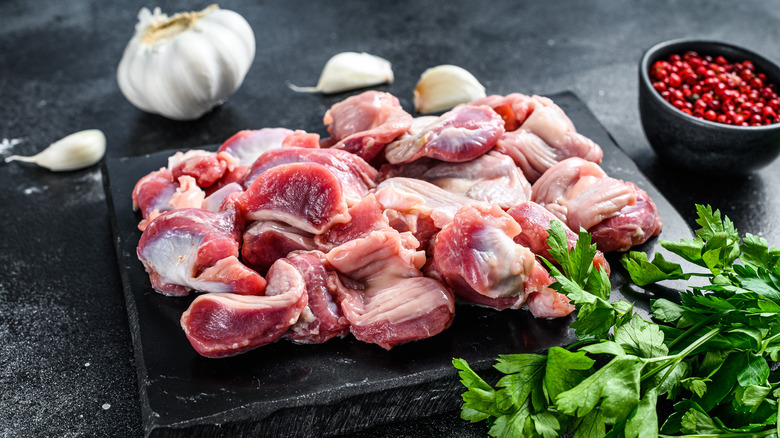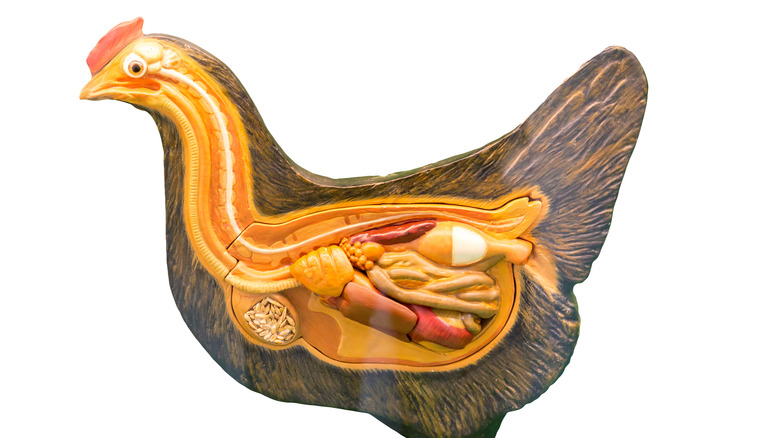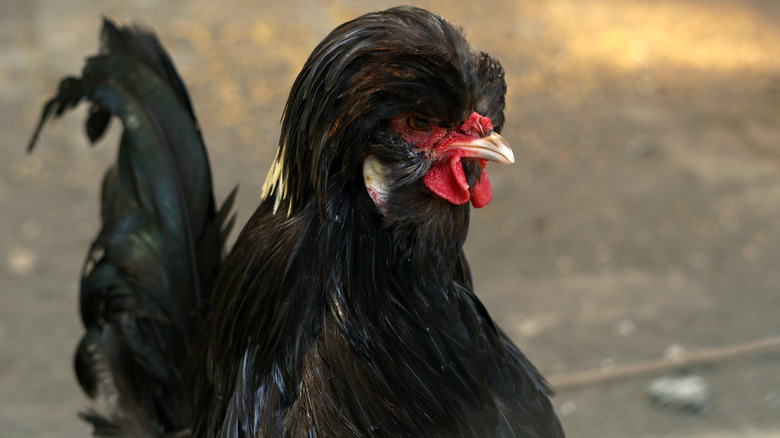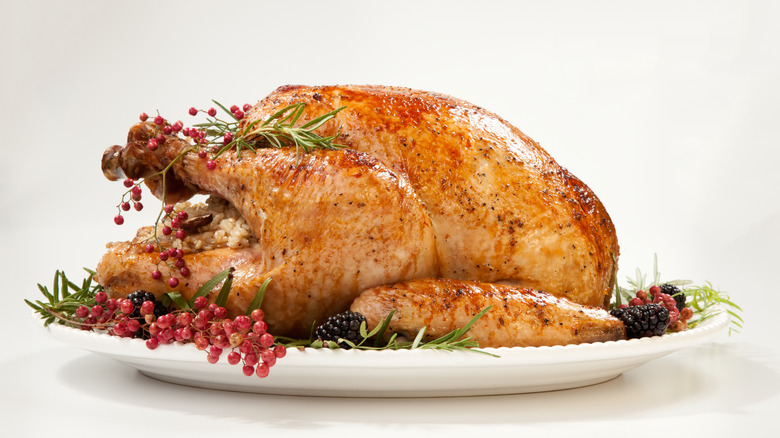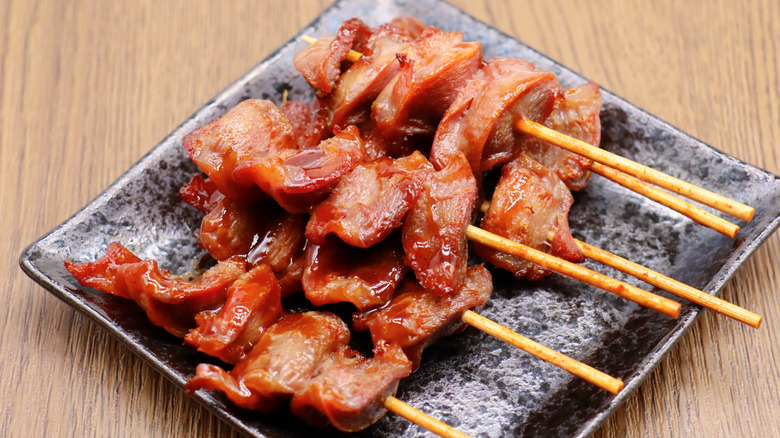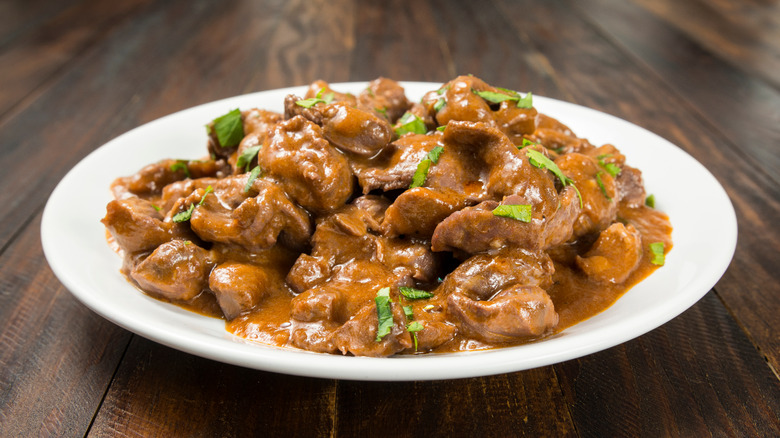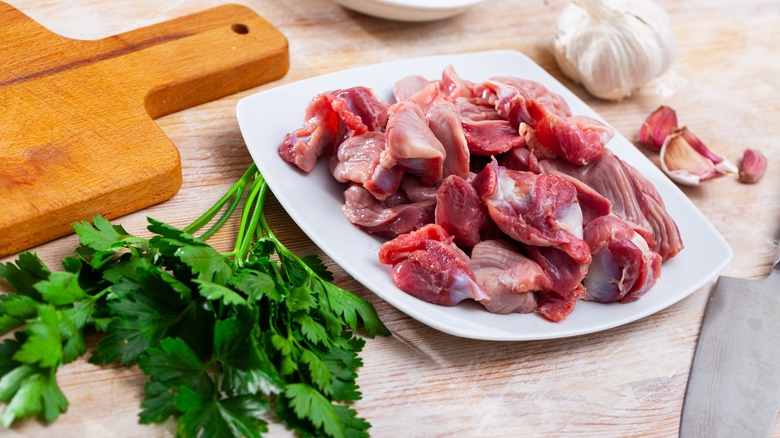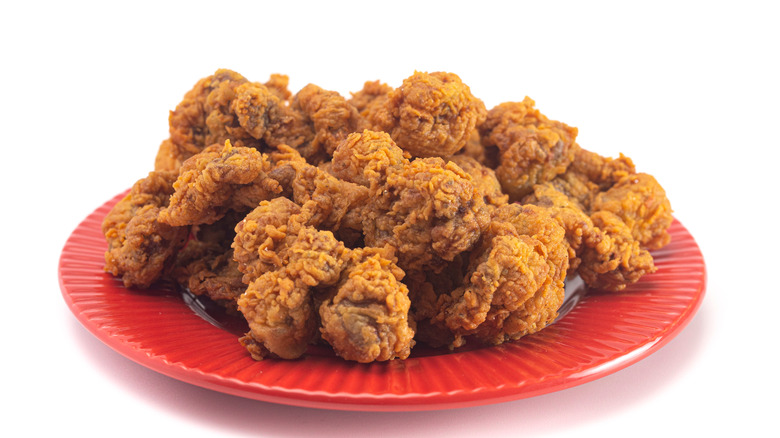The Untold Truth Of Gizzards
If you've assumed that the humble gizzard belongs on a list of bizarre foods you will never eat, it's likely that you've assumed wrong. Gizzards, particularly chicken gizzards, are extremely popular worldwide and even form the basis of many delicious Southern comfort food dishes cooked right here in the U.S.
Yes, it's an organ, which can be a bit of a gastronomic hurdle if you're used to eating muscle meats only; however, if you've been lucky enough to try fried chicken livers at Popeyes, then you know that organ meats can be delicious, too.
Since gizzards are eaten all over the world, eating them can open up several new chapters of world cuisine, and who doesn't love learning to cook something new? They're also nutritionally dense, widely available, tasty when prepared correctly, and an amazing source of protein that will never bust your budget.
Maybe you're new to gizzards or simply want to know more about them; either way, we've got you covered. Read on to discover some essential facts about this fascinating organ meat.
The gizzard is an organ
The gizzard is an organ that is found in many different animals, but especially the feathered kind — all birds have gizzards (via All About Birds). The stomachs of birds have two main sections: the glandular part, which secretes digestive enzymes, and the gizzard, a thick, muscular organ in which the food is broken down before passing into the intestines for absorption.
In birds that eat hard seeds, nuts, and grains, such as chickens, ducks, and turkeys, their muscular gizzard does the job our teeth do for us, namely grinding up our food (per Britannica). Other birds that eat mainly fruit, nectar, or insects, have thinner, softer gizzards.
Birds with muscular gizzards frequently ingest gravel and grit as they forage. These small stones and sand collect in the gizzard, where they roll around and help to grind up and digest food as the gizzard contracts.
The thick, muscular gizzards of chickens and other domesticated fowl are particularly popular as a delicious dish around the world.
Several different animals have gizzards
Humans have teeth to grind up our food prior to digestion, which is why we don't have gizzards. There are several different animals that don't have teeth and swallow their food whole — these animals rely, in part, on gizzards to digest their food (via Mom.com). Gizzards can be found in different species of birds, as well as some kinds of fish and reptiles.
Doves, turkeys, and chickens have gizzards, but so do owls, ostriches, and hummingbirds. Animals such as earthworms, and some species of fish, such as mullet, also possess this special digestive organ. Crocodiles and alligators are the only known reptiles to have gizzards. It would appear, that despite being near-perfect rhymes, neither wizards nor lizards have gizzards.
Animals that swallow food whole but do not have gizzards have evolved to develop various methods of digesting their food. Snakes, for example, digest their meals for days or even weeks through highly acidic digestive juices and digestive enzymes (via Science ABC).
In terms of worldwide culinary consumption, the gizzards of poultry such as chickens and ducks are, by far, the most popular kinds of gizzards.
Gizzards are part of giblets
Have you ever bought a whole turkey and found a little bag inside it with a bunch of ... things? Or seen a label that reads "whole chicken, no giblets?" Purchased poultry birds are often accompanied by a small bag of giblets in one of the cavities. But what exactly are giblets?
Although gizzards are usually part of the giblets, the words refer to different things. According to Science Direct, the giblets include the heart, liver, gizzard, and neck of a bird, usually a chicken. These organs can be used to make delicacies such as pâté and stock broth. Giblets also make a delicious treat for your dog or cat.
You may have also heard the word offal in reference to the internal organs of animals; however, this word is generally only used for the organs of four-legged, butchered animals such as cows, pigs, and sheep (via Metro).
Gizzards are eaten in different cuisines all over the world
Poultry gizzards are found in cuisines across the world. According to The Spruce Eats and DeLong's, in Haiti and Southeast Asia, gizzards are a popular street food option and are often fried and served as a snack.
In Ghana, gizzards are served on kebabs with vegetables. Peppered gizzards are a popular dish in Nigerian cuisine. In Japan, gizzards are often barbecued in yakitori, and in Mexico, they're added to breakfast burritos. European food incorporates gizzards into salads and pâtés.
In the United States, gizzards are often found in Southern cuisine, in dishes such as New Orleans gumbo, dirty rice, gizzards, and gravy. They are also simply fried and eaten alongside legs and wings.
Although it might seem odd to some palates, eating offal and giblets has been an important part of many cuisines for hundreds of years. These organs are high in important nutrients. Additionally, if we want to consume meat in the most sustainable manner while producing as little waste as possible, it's important to think about using all the parts of an animal –- after all, that's exactly what nose-to-tail cooking is all about.
Gizzards taste like intense dark meat chicken
If you prefer dark meat to white meat (the two different categories of meat muscles), you should definitely give gizzards a try. As Simply Recipes explains, gizzards have the flavor of a chicken's dark meat –- the meat found on the wings, thighs, and legs, rather than the breast -– but with a little more intensity.
Because they're essentially a powerful muscle that constantly contracts to break down food for the bird to digest, they can have a pretty chewy texture. Some recipes recommend soaking them overnight in a mildly acidic substance like buttermilk (which breaks down the muscle sinews) before frying or cooking with them.
Other recipes advise boiling them for several hours in a flavored broth to tenderize them. As a bonus, this method also creates a delicious stock that you can save and use to give unmatched depth of flavor to another chicken dish.
You can also cook them in the same way you would cook any other meat you'd like to tenderize low and slow, like a brisket (except gizzards are generally much more cost-effective).
Gizzards are full of nutritional goodness
Organ meats have been prized as delicacies in cuisines the world over for years. In addition to being delicious when prepared properly, they're often packed full of nutritional goodness. Gizzards are no exception.
As Livestrong.com explains, gizzards are very high in protein (17.7 grams per 3.5-ounce serving), very low in fat, and carb-free. They also contain high amounts of important minerals and vitamins, like zinc, iron, selenium, potassium, phosphorus, and B vitamins. They're also a great source of magnesium, copper, manganese, and vitamin C.
Studies indicate that selenium may protect against cancer, aid in the production of thyroid hormones, and support reproductive health. Vitamin B12 supports red blood cell production, as well as brain function. B12 is only found in animal products, so vegans and vegetarians are often deficient and should ensure that they make foods fortified with this essential vitamin a regular part of their diet.
You can buy gizzards at the grocery store
As Simply Recipes explains, gizzards can usually be found in the meat section of the grocery store or at your local butcher. You can also find them at international markets.
Usually, commercially-supplied gizzards will have been halved and cleaned when you buy them, but it's always worth checking to see whether they need an additional clean. Make sure you check inside the gizzards for small rocks and grit that may need to be removed.
To store gizzards, refrigerate them as you would any other part of a chicken, in their original packaging or a ziplock bag with the air squeezed out. You can also freeze them, although they should be used within four months.
Gizzards are relatively inexpensive, so they're a great source of protein if you're on a budget. You can mince gizzards to make gravy, or use them to add depth to any sauce (as long as it simmers for a long time). They can be added to Southern recipes like dirty rice. Gizzards can also be used to make excellent popcorn fried chicken.
